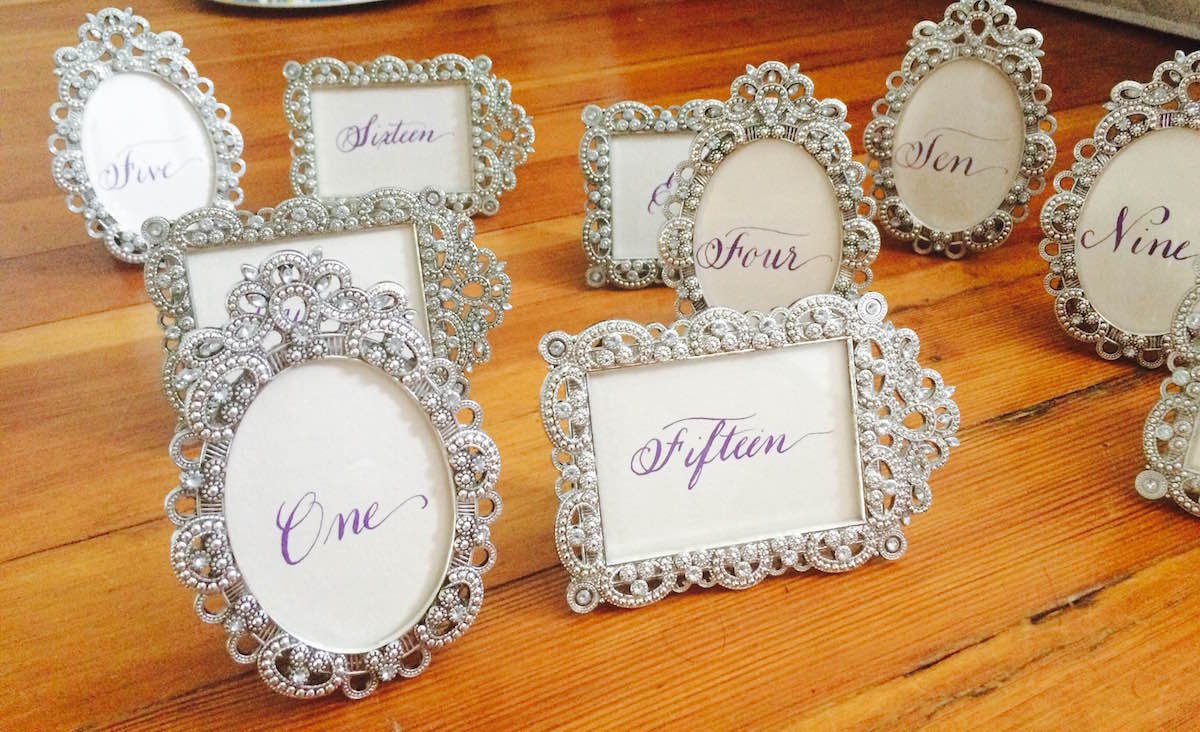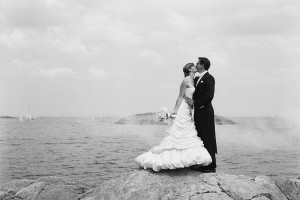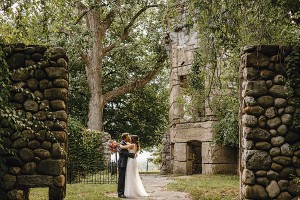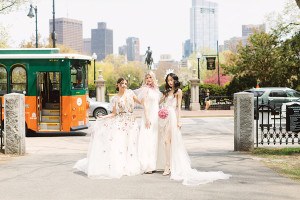Calligraphy Makes an Elegant Mark on Your Wedding

Courtesy photo
In a world of Eventbrite shoutouts, editing programs, and top-notch at-home printers, it would seem the art of the handwritten note has been written off.
Not just yet. Calligraphy is alive and well, and it’s still a well-respected touch at weddings.
Here, we talk with Script by Simone‘s own Simone Wornum about how (and where) to introduce this hand-crafted art to your wedding celebration.
How have you seen hand-crafted calligraphy battle our computer-driven world?
Technology drives our country, culture, businesses, and interactions, but calligraphy—the way it looks and the emotion it conveys—will always remain. So many people say they’re amazed that it’s still being done. People ask what program I use, and when I say my work is handwritten, it makes it that much more impressive. There’s nothing like opening your mailbox, and as you shuffle through bills and junk mail, there’s a handwritten letter with your name in beautiful calligraphy. I think more than ever it’s yearned for because we have online invitations and printable calligraphy that just can’t capture what a calligrapher can. Handwritten materials in general make the guest feel like they’re a true part of an exclusive, timeless experience.

Courtesy photo
How can a couple can incorporate calligraphy into their wedding?
Most of the work I’m doing is place cards, addressed envelopes, and wedding gifts like vows, poems, and love letters for the couple to share with each other on their special day. Save-the-Dates, seating charts, RSVP envelopes, table numbers, and signage are also typical projects. Typically calligraphers do a camera-ready-art design, so the couple can bring it to a stationer to be vectored and letter-pressed or printed on the invitation. Very rarely are full invitations written out with traditional calligraphy.
How long should a person hire you before their wedding?
Doing things completely by hand to personalize them is time-consuming. Safe timing is three to four months before the wedding. That’s one month of working time if the couple mails out invitations two to three months before the day. That gives us time to account for additions, changes, and other things that happen in the wedding process.
Are there different types of calligraphy?
The definition of calligraphy is “beautiful writing,” so the types of calligraphy are endless. Specerian, Copperplate and Round Hand are core in Western calligraphy culture, then you have everything from Gothic to the new trend in brush lettering. However that’s only in our culture. People have been practicing calligraphy since we began writing as a species. There’s Eastern Asian, African, and Islamic calligraphies, and they’re some of the most beautiful. You have styles that are more for elegant for black tie functions, very classic, beautiful balanced with flourishing, thin hairlines, and broad strokes. Nib length, size, and design are also instrumental. Flat or pointed nibs (the tools calligraphers use to write) will create totally different looking letters. Then you have very block and structured lettering, actual brushes used for brush lettering to create a more free flowing look, and all of these have their subdivisions. The different kinds really are endless.
Can you create a new font?
It’s all about experimentation! Flourishing techniques to emphasize letters, different nib experimentation, you start writing and adding more elements and see what happens. The way you hold your penholder, pressure, nib size, ink consistency, movements of the hand and arm, it all makes the calligraphy unique. Before you know it, you’ve created something new.
How can a couple make traditional calligraphy more unique for their wedding?
I have seen different color paper, textures, writing on unique surfaces such as mirrors, rocks, sand dollars, chalkboards to make the experience very unique, as well as customized fonts. There’s nothing like white ink written on black paper or gold shimmering in the sun with vibrancy and texture. Flourishing designs are used very often as well. The font sets the tone, and it’s important to know what you want to convey. Couples should always add a special touch to make your celebrations unique. No one’s wedding will ever be exactly like yours. The fonts people choose are a reflection of them. With calligraphy, it’s about as unique as you can get.
What stories do you want to see in Boston Weddings? Send us tips at weddings@bostonmagazine.com.
Getting married? Start and end your wedding planning journey with Boston Weddings' guide to the best wedding vendors in the city.


